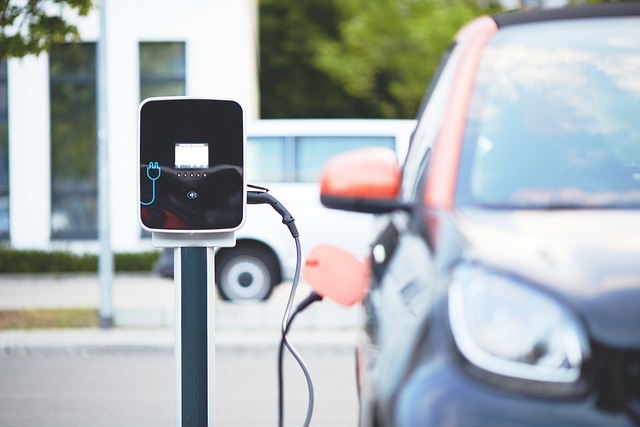Everything You Need To Know About Electric Cars In United States For 2025: Options and Prices
The landscape of electric vehicles (EVs) in the United States is rapidly evolving, with 2025 set to be a pivotal year for the industry. As more Americans consider making the switch to electric, understanding the available options and pricing becomes crucial. This article delves into the world of electric cars, exploring the anticipated models, technological advancements, and cost considerations for the U.S. market in 2025.

What Electric Car Options Will Be Available in 2025?
By 2025, the U.S. electric car market is expected to offer a diverse range of options across various segments. Major automakers and emerging EV specialists are slated to introduce new models, from compact city cars to luxury SUVs. Traditional manufacturers like Ford, General Motors, and Volkswagen are expanding their electric lineups, while Tesla continues to innovate. Newcomers such as Rivian and Lucid are also gaining traction with their premium offerings.
Consumers can anticipate advancements in battery technology, leading to increased range and faster charging times. Many 2025 models are expected to offer ranges exceeding 300 miles on a single charge, addressing one of the primary concerns of potential EV buyers. Additionally, improvements in autonomous driving features and connectivity are likely to be standard in many electric vehicles by this time.
How Will Electric Car Prices Compare to Traditional Vehicles?
The pricing of electric cars in 2025 is projected to become more competitive with their gasoline-powered counterparts. As battery production scales up and technology improves, manufacturing costs are expected to decrease, potentially leading to more affordable EVs. However, premium and luxury electric models will still command higher price points due to advanced features and performance capabilities.
It’s important to note that while the initial purchase price of electric cars may still be higher than comparable conventional vehicles in some cases, the total cost of ownership often proves favorable for EVs. Lower fuel costs, reduced maintenance requirements, and potential tax incentives contribute to long-term savings for electric car owners.
What Factors Will Influence Electric Car Adoption in the U.S. for 2025?
Several factors are expected to drive electric car adoption in the United States by 2025. Government policies, including potential extensions or modifications to federal tax credits for EV purchases, will play a significant role. State-level incentives and regulations promoting zero-emission vehicles are also likely to influence consumer choices.
The expansion of charging infrastructure is another critical factor. By 2025, it’s anticipated that the U.S. will have a more extensive network of public charging stations, making long-distance travel in electric vehicles more feasible. Many workplaces and residential areas are also expected to increase the availability of charging options, further supporting EV adoption.
Consumer awareness and attitudes towards environmental issues may continue to shift, potentially increasing demand for eco-friendly transportation options. As more people become familiar with electric vehicles through personal experience or exposure, adoption rates could accelerate.
What Technological Advancements Can We Expect in 2025 Electric Cars?
Electric cars in 2025 are likely to feature significant technological advancements. Solid-state batteries, which promise higher energy density and faster charging times, may begin to appear in some high-end models. This technology could potentially extend driving ranges beyond 400 miles on a single charge.
Enhanced autonomous driving capabilities are expected to be more prevalent, with many electric cars offering advanced driver assistance systems (ADAS) that approach Level 3 or even Level 4 autonomy. These systems will provide more sophisticated hands-free driving experiences on highways and in certain urban environments.
Connectivity features will also evolve, with electric cars becoming increasingly integrated with smart home systems, mobile devices, and the broader Internet of Things (IoT) ecosystem. This connectivity may enable more efficient energy management and personalized user experiences.
How Do 2025 Electric Car Options and Prices Vary Across Different Segments?
Electric car options and prices in 2025 are expected to span a wide range across different market segments. Here’s a comparison of anticipated models and their estimated prices:
| Segment | Model Example | Estimated Price Range | Key Features |
|---|---|---|---|
| Economy | Chevrolet Bolt EV | $30,000 - $35,000 | 250+ mile range, compact design |
| Mid-range Sedan | Tesla Model 3 | $35,000 - $45,000 | 300+ mile range, advanced autopilot |
| Luxury Sedan | Lucid Air | $70,000 - $150,000+ | 500+ mile range, ultra-fast charging |
| Compact SUV | Ford Mustang Mach-E | $40,000 - $60,000 | 300+ mile range, performance variants |
| Full-size SUV | Rivian R1S | $70,000 - $90,000 | Adventure-focused, 300+ mile range |
| Performance | Tesla Roadster | $200,000+ | 0-60 mph in under 2 seconds, 600+ mile range |
Prices, rates, or cost estimates mentioned in this article are based on the latest available information but may change over time. Independent research is advised before making financial decisions.
The electric car market in 2025 is poised to offer a wide array of options catering to diverse consumer needs and preferences. From affordable city cars to high-performance luxury vehicles, the industry is set to provide more choices than ever before. As technology advances and production scales up, electric vehicles are expected to become increasingly accessible to a broader range of consumers, potentially reshaping the automotive landscape in the United States.




